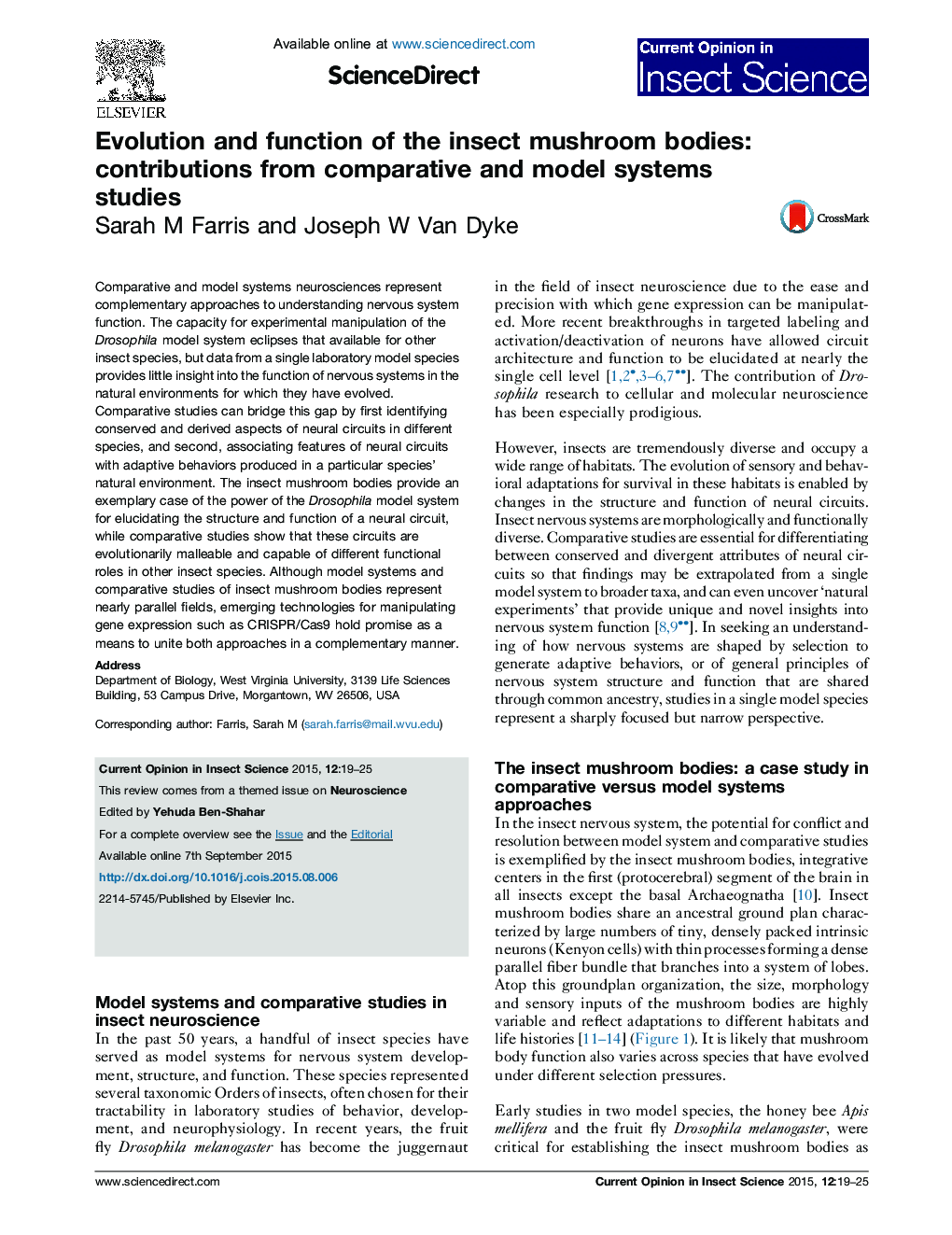| Article ID | Journal | Published Year | Pages | File Type |
|---|---|---|---|---|
| 6373956 | Current Opinion in Insect Science | 2015 | 7 Pages |
Abstract
Comparative and model systems neurosciences represent complementary approaches to understanding nervous system function. The capacity for experimental manipulation of the Drosophila model system eclipses that available for other insect species, but data from a single laboratory model species provides little insight into the function of nervous systems in the natural environments for which they have evolved. Comparative studies can bridge this gap by first identifying conserved and derived aspects of neural circuits in different species, and second, associating features of neural circuits with adaptive behaviors produced in a particular species' natural environment. The insect mushroom bodies provide an exemplary case of the power of the Drosophila model system for elucidating the structure and function of a neural circuit, while comparative studies show that these circuits are evolutionarily malleable and capable of different functional roles in other insect species. Although model systems and comparative studies of insect mushroom bodies represent nearly parallel fields, emerging technologies for manipulating gene expression such as CRISPR/Cas9 hold promise as a means to unite both approaches in a complementary manner.
Related Topics
Life Sciences
Agricultural and Biological Sciences
Agronomy and Crop Science
Authors
Sarah M Farris, Joseph W Van Dyke,
